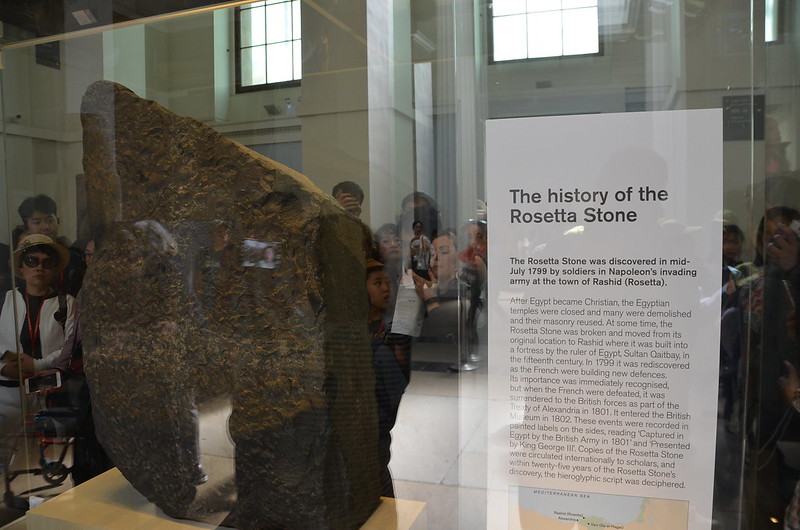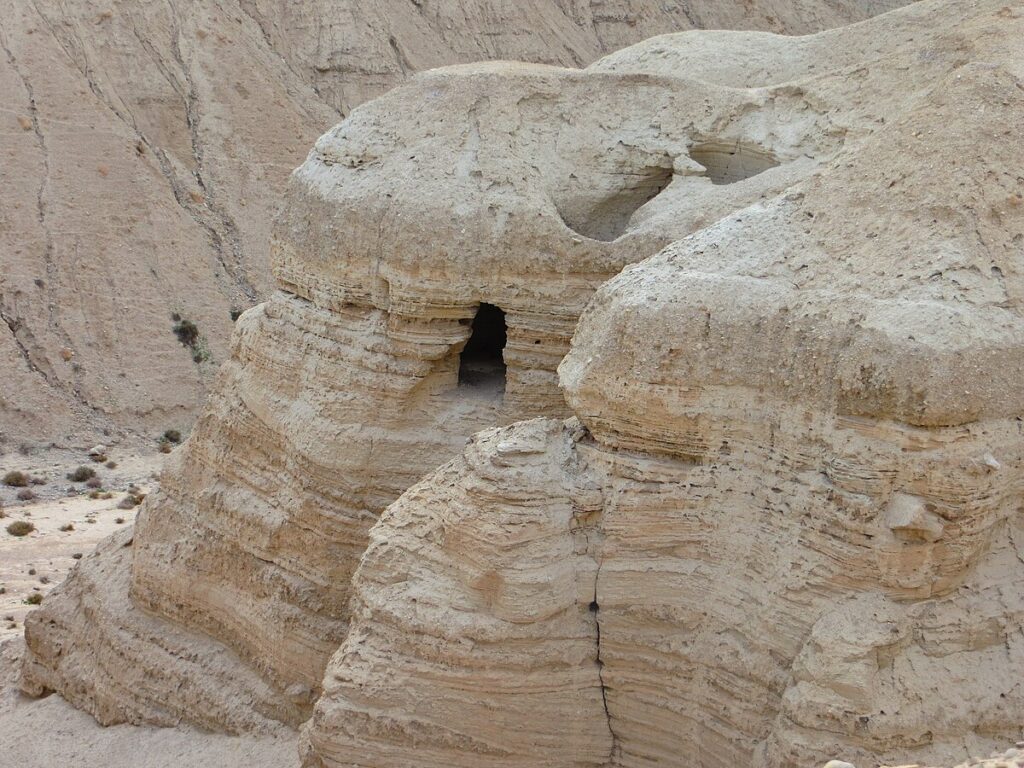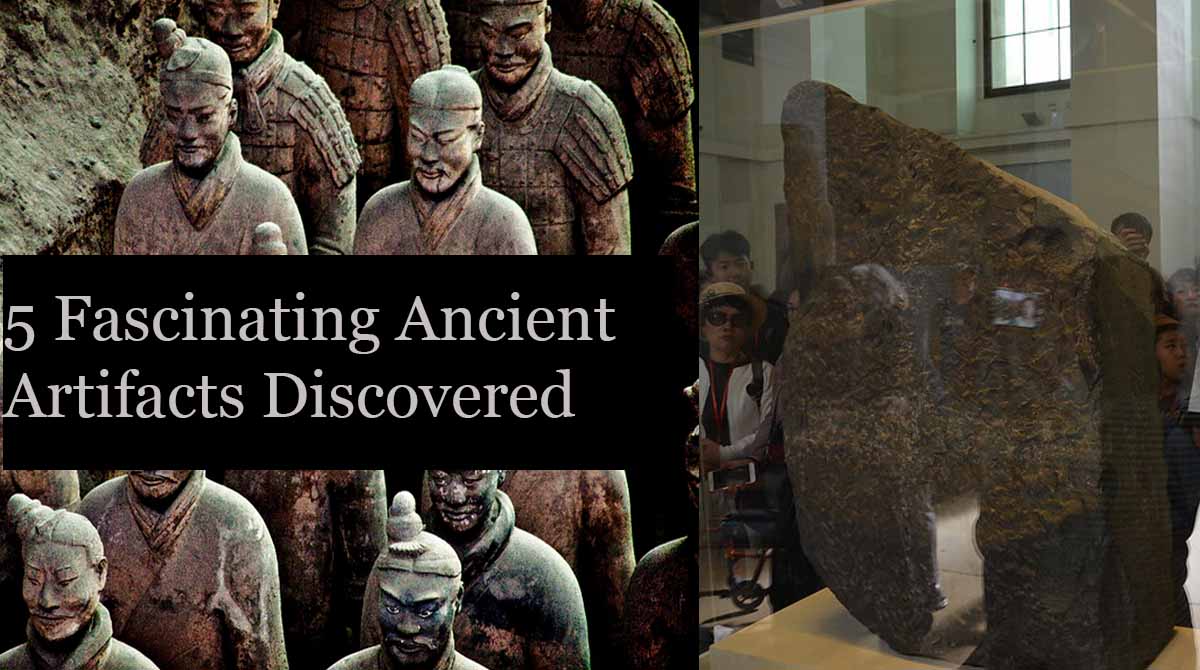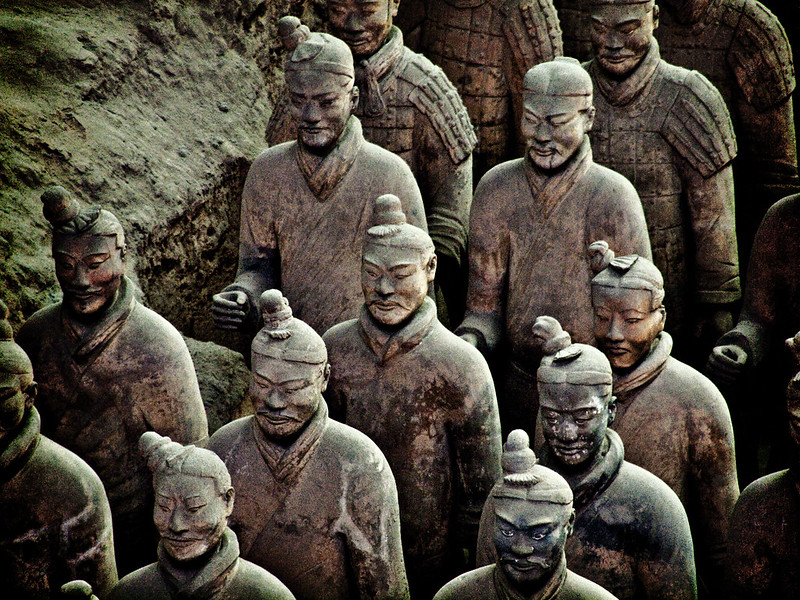Rosetta Stone (1799)

Unlocking Ancient Secrets with the Rosetta Stone
Ancient Egyptian writing system called hieroglyphs was finally figured out with the help of the Rosetta Stone, which was found in 1799. Whatever its importance, it took years of hard work before researchers could figure out what it was all about. The artifact has been in the British Museum in London since 1802, with the exception of a short time spent in another place during World War I to keep it safe.
Finding the Rosetta Stone
Army soldiers in Napoleon Bonaparte’s mission in Egypt found the Rosetta Stone. It was discovered in an old wall near the town of Rashid, which is also known as Rosetta, according to the British Museum. After Britain beat France in 1801, they took control of the artifact and have kept it ever since.
How important is the Rosetta Stone?
Along with being 44 inches tall and 30 inches wide, the Rosetta Stone is a piece of a bigger stone slab. Three writing systems are used to write the same text: Egyptian, Demotic, and Greek. The knowledge of hieroglyphs, a writing system that wasn’t used after the 4th century A.D. and was a mystery for hundreds of years, depended on this three-script writing.
Scholars finally got to read the rich history and culture written in old Egyptian texts after using the stone to decipher it.
Decoding the Message: It wasn’t easy to decode the Rosetta Stone; it took many years of work by many scholars working together. Physicist Thomas Young from England made the first big step forward in 1814 when he figured out that the hieroglyphs inside oval shapes, called cartouches, were royal names. In 1822, French scholar Jean-François Champollion said that he had successfully read the text, building on Young’s work.
According to the writing, the order was made in 196 B.C., during the rule of King Ptolemy V Epiphanes. A council of priests wrote it, and it says that they back the king. The text lists many of Ptolemy V’s successes, such as lowering taxes and working to bring peace back to Egypt. Ancient Egyptian politics, religion, and society can all be better understood thanks to this amazing find.
In human history, the Rosetta Stone is still one of the most famous objects. It is a symbol of persistence, teamwork, and the never-ending search for knowledge. Thousands of years later, its story still fascinates and inspires people, shedding light on the mysteries of a lost society.
Terracotta Army (1974)
A group of peasants in Shaanxi province, China, found pieces of a clay figure while digging a well in 1974. A huge army of life-sized terra-cotta soldiers and horses buried near the tomb of Qin Shi Huang, China’s first emperor, was found by accident. It is one of the most amazing archaeological finds of our time. The emperor’s undiscovered grave had been guarded by these statues for more than 2,000 years.
The discovery site is close to Xi’an, a busy city with nine million people. The area is very different from one another. It used to be the capital of Qin Shi Huang. It has harsh weather, dry, shady land with persimmon and pomegranate trees scattered around, and hills with caves in them. These days, the area is also a popular tourist spot, with hotels and gift shops selling copies of the pottery.
Around 600 pits have been found by archaeologists in an area that is 22 square miles in size. The Emperor Qinshihuang’s Mausoleum Site Museum lets visitors see three of the larger pits. The museum opened in 1979 and has long rows of warriors that were put back together from broken pieces. Each soldier is very different from the others, with hairstyles, clothes, and facial features that are all made just for them. Some are still partially buried where they were found, and others are lying on their sides next to clay horses. Like the Great Wall and the Forbidden City, the museum has become one of China’s most popular tourist spots.
People all over the world are also interested in the terracotta warriors. These artifacts were shown in shows at the British Museum and the Metropolitan Museum of Art between 2007 and 2009. Officers in armor, soldiers in plain clothes, archers, terracotta horses, and intricate bronze chariots were all on display. These items show what kinds of treasures have been found at Xi’an, where more than 2,000 of the 8,000 warriors are thought to have been buried.
At first, the discovery made people think that Qin Shi Huang was a military leader. But ongoing research has shown that the legacy is more complicated than that. With an army of more than 500,000 soldiers, he took over China and set up government systems that have lasted for hundreds of years. Standardizing weights and measures and writing scripts were some of the things he did well. Along with soldiers, the emperor’s tomb has sculptures of bronze waterfowl, terracotta musicians, officials, and acrobats, showing the full scope of his empire.
To make the terracotta army, the figures were made in large batches, with each one being individually customized with small details. The soldiers look like very individualistic pictures, but they were probably more like groups of pictures of people from different parts of China than real portraits.
The capital of Qin Shi Huang was Xianyang, which was a huge city with more than 270 palaces. He moved the ruling families of rival states to copies of their old palaces as he took over rival states. Right at the same time, he started building his tomb complex, which required about 720,000 workers to complete. Qin Shi Huang became king when he was 13 years old. He took over a kingdom that was shaped by the strict doctrine of legalism. He made changes like a single writing system and standard weapons with the help of his advisor Li Si. He united China with his ambitious victories, which is why he was called “emperor” in 221 B.C.E.
The emperor also put a lot of money into building roads, canals, and granaries. He made the northern border stronger by building a wall out of rammed earth and broken stone that was a prototype for the Great Wall. Even with all of his accomplishments, Qin Shi Huang was very interested in living forever. He sent out expeditions to look for elixirs that could make people live longer, but they were unsuccessful. His life ended in 210 BCE, when he was 49 years old, in mysterious circumstances that may have had something to do with these goals.
The empire became extremely chaotic after he died. Because of political intrigue, his oldest son wasn’t able to take over, so his younger son ruled for a short time but caused a lot of trouble. Within four years, internal fighting and rebellion brought an end to the Qin dynasty. The terracotta army was destroyed by theft and fire, which shows how chaotic things got after that.
One mysterious thing that hasn’t been solved is the emperor’s tomb. According to old writings, there was a large burial chamber with mercury streams that looked like rivers. Soil testing near the site, which showed high levels of mercury, backs up these stories. The tomb has not been touched in order to show respect and protect it. Archaeologists and scholars still hope that one day there will be technologies that can open up ancient artifacts without damaging their delicate contents.
The legacy of Qin Shi Huang is still very important. His work to unify China, improve government, and build the amazing terracotta army solidify his place as a key figure in history. His life and death are still a mystery, and people are still interested in and arguing about the details. He was one of the most interesting rulers in history.
Dead Sea Scrolls (1947-1956)
Archaeologists find a new piece of the Dead Sea Scroll in Israel’s “Cave of Horror.”
Researchers looking into Israel’s “Cave of Horror” have found a new piece of the Dead Sea Scrolls. This is a big find that has interests both historians and scientists. This is the first important find of its kind in more than 60 years.

The Israel Antiquities Authority (IAA) dug up something that they thinks is part of the “Book of the 12 Minor Prophets.” It was a piece of writing in Greek. This writing was found for the first time in 1961. Parts of Zechariah 8:16–17 and Nahum 1:5–6 can be found on the recently discovered scroll. The words are a little different from other forms that are known, but these differences show us a lot about how the standard Hebrew Bible came to be. Joe Uziel, who runs the IAA’s Dead Sea Scrolls unit, stressed how important these differences were, saying that bible texts were not as fixed as people usually think.
People first heard about the Dead Sea Scrolls in 1947, when a Bedouin shepherd found the first pieces in the Qumran Caves. This was one of the most important historical finds of the 20th century. The oldest known texts of the Hebrew Bible and other writings not found in the Bible were found in these manuscripts, which were made between the third century BCE and the first century CE. However, not all scrolls have proven authentic. Fragments that appeared on the market after 2002, some purchased by the Museum of the Bible in Washington, D.C., have since been identified as forgeries.
The recent discovery took place in the “Cave of Horror,” a site infamous for the grim remains of men, women, and children who perished during the Bar Kokhba revolt, a Jewish uprising against Roman rule between 132 and 136 CE. Archaeologists in the 1950s found skeletons in the cave, believed to have died of starvation during a Roman siege. Accessible only by descending 200 feet using ropes, the cave remains a challenging site to explore.
Israel Hasson, director of the IAA, praised the excavation team’s courage and dedication. “The desert team showed exceptional bravery, rappelling down into caves between heaven and earth,” he said. The team worked in harsh conditions, enduring suffocating dust to recover artifacts of immense historical value.
The IAA’s efforts to excavate the Qumran Caves have intensified since 2017 to protect the region’s treasures from looters. Amir Ganor, head of the authority’s theft prevention unit, expressed satisfaction that this time, they managed to stay ahead of the plunderers.
This latest find is part of a broader wave of discoveries in the Judean Desert. Alongside the scroll fragment, archaeologists unearthed a partially mummified 6,000-year-old child, ancient Jewish coins from the Bar Kokhba era, arrowheads, and a remarkably well-preserved 10,500-year-old basket. The basket, woven from reeds and predating pottery, is believed to be the oldest of its kind ever discovered. It was found by teenagers from the Nofei Prat pre-military academy, who participated in the excavation efforts.
Ronit Lupu, a historian with the IAA, highlighted the significance of the mummified child’s remains. “The skeleton and the cloth wrapping were extraordinarily well preserved,” Lupu said, attributing the preservation to the cave’s arid conditions, which facilitated natural mummification. Even after millennia, traces of skin, tendons, and hair were still intact.
These discoveries not only deepen our understanding of ancient civilizations but also underscore the importance of safeguarding archaeological treasures for future generations. The artifacts retrieved from the Judean Desert provide a rare glimpse into humanity’s distant past, connecting us to the stories and struggles of those who came before.
King Tutankhamun’s Tomb (1922)
British Egyptologist and archaeologist Howard Carter made a small hole in the sealed doorway of a tomb on November 26, 1922. He did this while carrying a candle in one hand. He looked through the small crack and saw for the first time the jewels that were hidden in Tutankhamun’s tomb. This amazing find, the first complete tomb of an 18th Dynasty Pharaoh ever found, captivated people all over the world.
Over the next ten years, Carter and his team carefully dug up the tomb’s contents. The treasures included the mummified body of the pharaoh, beautiful wall paintings, religious objects, and different things that were meant to go with the young king to the afterlife. This amazing discovery not only gave us new information about how people lived in ancient Egypt, but it also confirmed Carter’s place in the history of archaeology.
Howard Carter was born in Kensington to artist Samuel Carter. Because he was sick as a child, he was sent to Norfolk to live with family and went to school at home on his own. As a child, he became interested in Egyptology after visiting Didlington Hall, a famous local mansion owned by the Amherst family and known for its large collection of Egyptian artifacts. Carter improved his art and archaeology skills with the help of his father after being exposed to these things.
Carter’s growing skill got him a spot on a team led by Percy Newberry that dug at the tombs of Beni Hasan in 1891. Thanks to the Egypt Exploration Fund, this chance was made possible. This fund is used to find and study Egypt’s old wonders. Carter also got help early in his work from well-known people like Flinders Petrie at Amarna and Henri Édouard Naville at the temple of Hatshepsut. By 1899, Carter had become Chief Inspector of the Egyptian Antiquities Service and was in charge of many digs, including those at Thebes.
Carter’s success did have some problems, though. Egyptian guards and French tourists got into a fight at Saqqara in 1905, which turned into what is now known as the Saqqara Affair. The fact that Carter stood by the guards caused him to quit. Even with this loss, things turned around for him when he met Lord Carnarvon in 1907.
Lord Carnarvon, an English nobleman who was very interested in Egyptology, gave Carter the money he needed to keep working. Carter used modern methods on the digs that he was in charge of overseeing for Carnarvon. The legendary finding of Tutankhamun’s tomb was made possible by their work together.
The road that led to this discovery wasn’t easy. After years of digging that turned up nothing, Lord Carnarvon got angry and told Carter that he would take away the money if nothing was found in the next season. Determined, Carter went back to the Valley of the Kings and focused on an area that had been missed the first time. A water boy found a step that led to a locked doorway with old seals and hieroglyphics on November 4, 1922. Carter knew how important the find was and had the area reburied to protect it. He told Lord Carnarvon right away, and on November 23, he came to see the dig.
Three days later, Carter made a small hole in the doorway, which let a rainbow of golden riches shine through. This was the best part of Carter’s work, and it was also a turning point for archaeology. Over the next few weeks and months, the team carefully numbered all of the items, including the beautiful things in the antechamber. Carter opened the inner room on February 16, 1923, and saw Tutankhamun’s sarcophagus. It was one of the most complete royal tombs ever found.
The find got people all over the world talking and making guesses, especially about a supposed curse that was linked to opening the tomb. The sudden death of Lord Carnarvon in April 1923 from blood poisoning spread these stories. Over time, the tale grew as other team members died in strange ways. Some people thought it was just a myth, but others believed in the pharaoh’s curse. Even Arthur Conan Doyle said that the tomb was watched over by a “evil elemental spirit.” Even though it was a mystery, no proof of a curse was ever found in the tomb itself.
Carter continued to make sure that the riches in the tomb were carefully recorded, a job that took years to finish. After he stopped working in the field, he spent all of his time giving lectures and talking about his experiences, which inspired new Egyptologists. The amazing finding he made will live on forever after he died in 1939 from Hodgkin’s disease.
It makes sense that Carter’s eulogy is based on a quote from Tutankhamun’s Wishing Cup: “May your spirit live, may you spend millions of years, you who love Thebes, sitting with your face to the north wind, your eyes fixed on happiness.” It’s a tribute to the person who found one of history’s most important artifacts and helped people learn more about the secrets of ancient Egypt.
Lascaux Cave Paintings (1940)
How the Lascaux Cave Paintings Were Found
A group of four teens found one of the most amazing archaeological finds of the 20th century on September 12, 1940. They found the Lascaux Caves when they were chasing their dog into a small hole in the ground. Inside, they found a gallery of beautiful ancient art. This amazing site, which is in the Vézère Valley of the Dordogne area in southwestern France, has been praised as a masterpiece of Upper Paleolithic art ever since.
His name was Henri-Édouard-Prosper Breuil, and he was one of the first people to study these amazing paintings. According to his guess, the piece of art was made between 15,000 and 17,000 years ago, making it one of the best examples of Upper Paleolithic art. The largest cave in the Lascaux cave system is 66 feet wide and 16 feet high. Its walls are covered with almost 2,000 figures, including animals, people, and abstract symbols. About 600 of them are detailed animal models that were painted or drawn, and the other 1,500 are carvings in the cave walls.
The paintings show in great detail animals that people living in the Paleolithic age would have known. There are a lot of horses in the art, but there are also stags, cattle, bison, cats, bears, rhinoceroses, and even birds. The main room of the cave is called the Hall of the Bulls. It has carvings of four huge aurochs standing tall over horses and deer running away. One of these bulls is 17 feet long, which makes it the biggest animal drawing ever found in cave art.
The Axial Gallery is a small passageway next to the Hall of the Bulls. It is often called the “Sistine Chapel of Prehistory” because of how intricately it is decorated on the ceiling. In this part, there is a circle of red aurochs that are painted with stunning detail. From the Hall of the Bulls, there is another way to get to the lateral Passageway, which has carvings and paintings of different animals. Further along, the Nave has an impressive panel of a big black cow, and a frieze close shows five deer swimming. In the Chamber of Felines, which is another part of the cave, carvings of lions take up most of the space.
One of the most mysterious parts of Lascaux is The Shaft, which is also called The Shaft of the Dead Man. In this scene, there is a bison that is hurt, a woolly rhinoceros, a bird on a stick, and the only person in the cave. Some people see the person with the bird-like head and the phallus standing up as a shaman performing a rite. Another strange figure shows up with panther skin, a deer’s tail, and a bison’s hump on it, which makes the site even more mysterious.
The cave was first opened to the public in 1948, after being empty for more than 17,000 years. But by 1955, algae started to grow on the cave walls because of changes in the environment brought about by bright lights and more people visiting. The crowds’ carbon dioxide, heat, and humidity damaged the fragile works in a way that can’t be fixed. Because of this, the cave was locked up for good in 1963. Even after the gallery was closed, mold continued to grow and threaten the art. By the 2000s, black mold was a major threat to the site’s protection. Some progress has been made in limiting human interference. Since 2008, accounts say the black spots have begun to fade.
In 1979, UNESCO named the Lascaux Caves and other painted caves in the Vézère Valley World Heritage Sites because of their cultural and historical value. A copy of the Hall of the Bulls and the Painted Gallery, called Lascaux II, was built just 200 meters from the original site so that people could still see how beautiful the paintings were. This modern gallery, which opened in 1983, lets people enjoy the prehistoric art without affecting the cave’s delicate environment.
It’s clear that our ancestors were very creative and smart because of the Lascaux Caves. The original site is still off-limits so that its valuable artifacts can be kept safe. However, the replicas make sure that the amazing art of the Paleolithic period will continue to amaze and teach people in the future.


